Northeast India, since many years, had remained beyond the ambit of the country’s travel and tourism industry-related planning. The reason is that the region is somewhat cut off from the mainland India but for the narrow ‘Chicken’s neck’ Siliguri connector strip and has limited accessibility. But these days, certain developments have taken place in the accessibility and so, more and more people have started exploring this obscure piece of land. This has introduced many to the cultural, ethnic as well as religious diversities of Northeast India. These explorations have un-earthed the wealth of many rare, ancient Hindu temples that the region is dotted with.
The top 15 Hindu temples of NE India have been listed below-
Kamakhya Temple, Assam
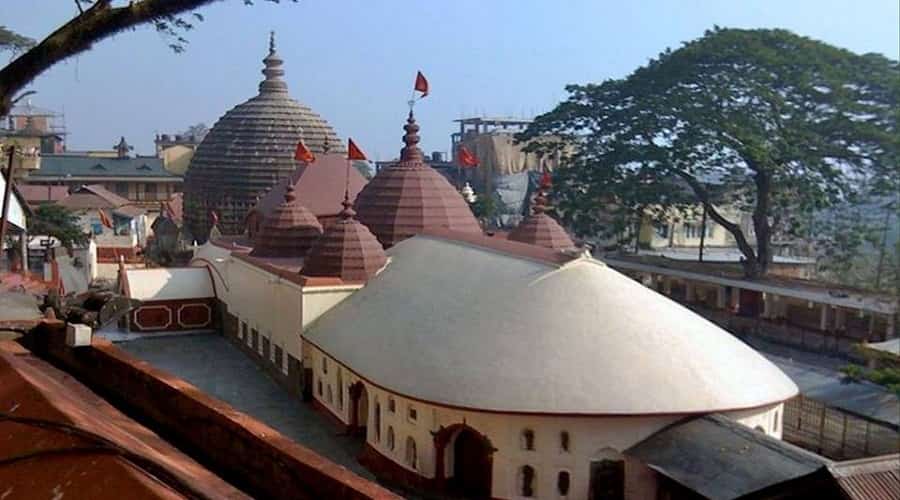
Kamakhya Temple of Guwahati belongs to Goddess Kamakhya and is one of the most ancient Shakti Peethas of the country. Myths hold that Sati’s yoni and womb had fallen at this place and thus here a Shaktipeeth came into being. This temple is said to have been erected around the 7th century and the goddess here stands as an epitome of Tantric spiritual forces. The Ambubachi Mela associated with the Kamakhya temple enjoy global fame.
Tripura Sundari Temple, Agartala
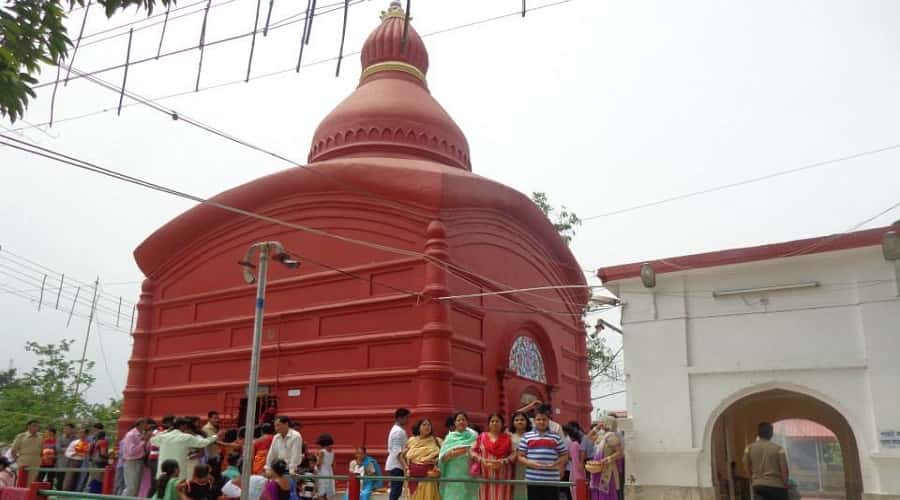
Sundari Temple popularly referred to as Matabari Sundari temple is an abode of Goddess Tripura Sundari. This too is an important Shaktipeeth of the country. As per myths, the right foot of Goddess Sati had fallen at this very place. The temple is situated in the famous Udaipur city of Tripura, at a distance of 55kms from Agartala; Tripura’s capital. The temple’s unique architecture resembles the typical tortoise’s mound. There are two idols within the temple; the 5ft tall idol is that of the main deity; Tripura Sundari and second idol which is 2ft tall is that of ‘Choti Maa’.
Govindajee Temple, Manipur
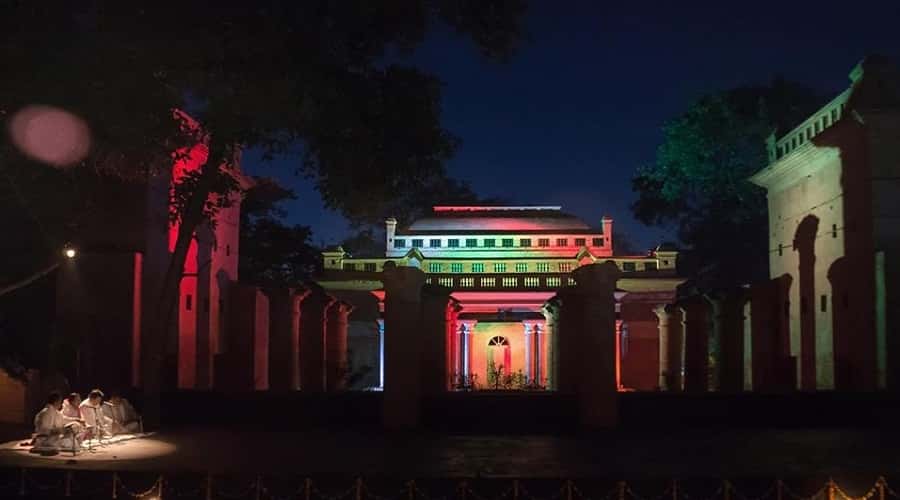
This is a beautiful and magnificent temple enshrining the deity of Govindajee- a manifestation of Krishna-Radhe. This temple is located in Manipur’s Imphal city and attracts scores of Vaishnavite pilgrims from far and wide. The temple’s construction is attributed to the efforts taken by King Chandrachur.
- Also Read: Popular Pilgrimage Places in Manipur
Malinithan Temple, Arunachal Pradesh
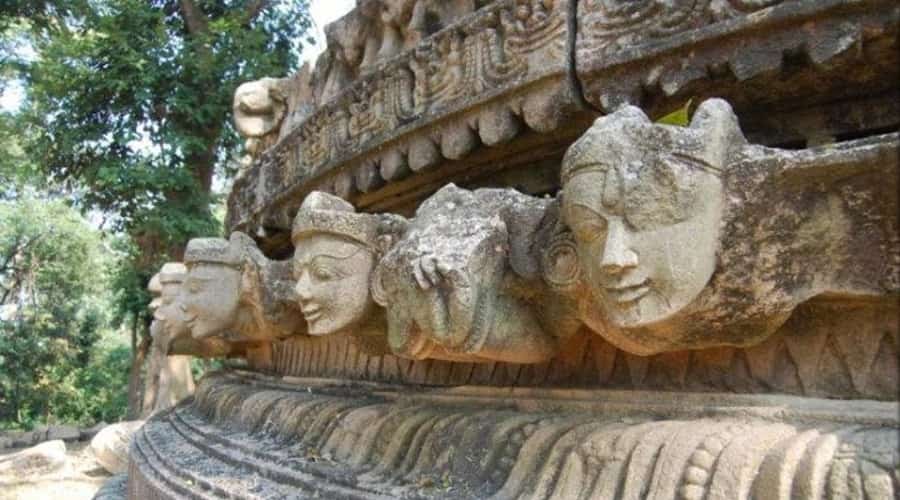
Malinithan Temple is a Goddess Durga temple located in Arunachal’s west Siang district. The temple stands at the base of the Siang hills. Goddess Durga is known by the name of ‘Malini’ here as she is said to have offered a ‘mala’ or garland to Lord Krishna and Devi Rukmini; consort of Lord Krishna. The temple architecture showcases the Odissi style architecture and the interiors of the temple are decked up with carvings, the themes of which date back to 14th-15th centuries. Another name for Malinithan temple is Aakash Ganga temple.
- Also Read: Most Popular Festivals in Arunachal Pradesh
Nartiang Durga Temple, Meghalaya
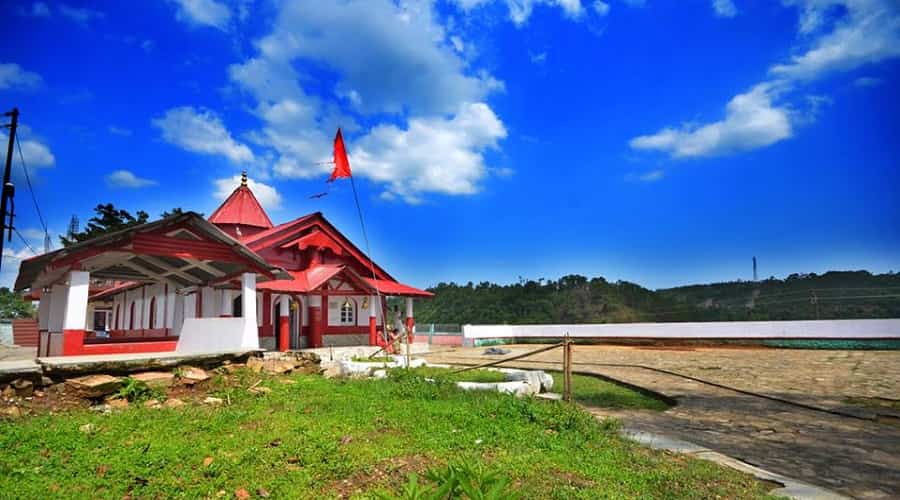
This revered Shakti Peeth is an abode of Goddess Jainteshwari or Jaintiya who is none other than Goddess Durga. The temple of the Goddess graces the hill top of Jaintiya hills in the state of Meghalaya. Legends hold that the left thigh of Sati had fallen at this spot and thus the Shaktipeeth came into being.
Da Parbatia Temple, Assam
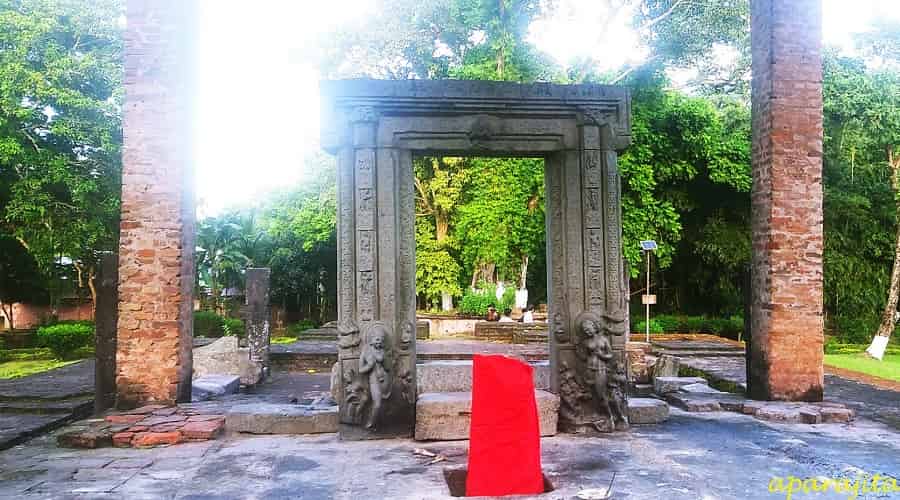
An ancient temple in the North-Eastern region of India is the Da Parbatia Temple, which is located in the city of Tezpur, Assam. The temple dates back of 6th century AD, which was built by the Ahom rulers. In the year 1897, it was destroyed by an earthquake and today, only the relics of the temples are found on the site. The ruins are about 1500 years old and the temple famous for iconoclastic art and sculptural engraved on the door-frame still stands withstanding all the natural calamities, as remnants of the past. There is also a Shiva Linga in the site, which was worshiped during the ancient times by the Ahom rulers.
Kirateshwar Mahadev Temple, Sikkim
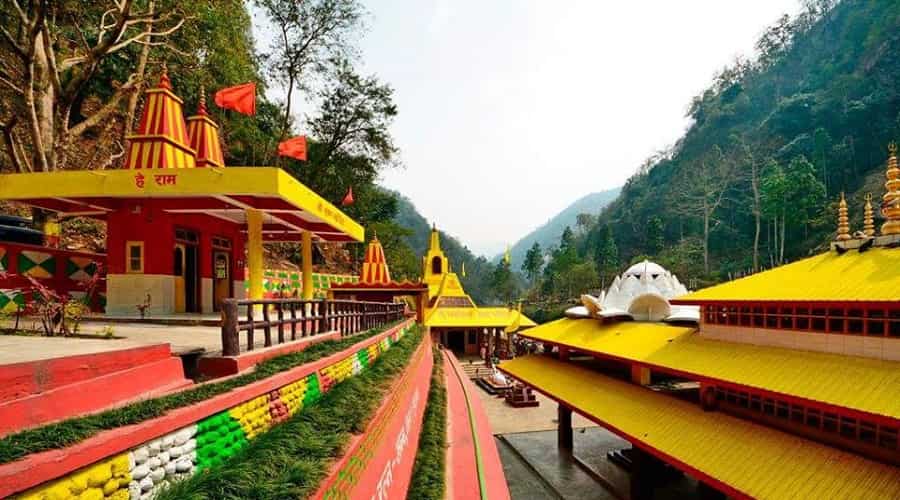
This temple is a lord Shiva temple in West Sikkim. It stands by the side of the Rangeet River. According to mythical tales, at this very place lord Shiva, moved by Arjun’s arduous penance and devotion, had offered Arjuna the boon that he would emerge victorious in the great warfare of Mahabharata. The temple receives a flood of devotees on the occasion of Bala Chaturdashi and Maha Shivratri. A suspended foot bridge conveys one to this beautiful temple. The common belief is that one who worships here is sure to acquire great piety and divine powers.
Mahabali Temple, Manipur
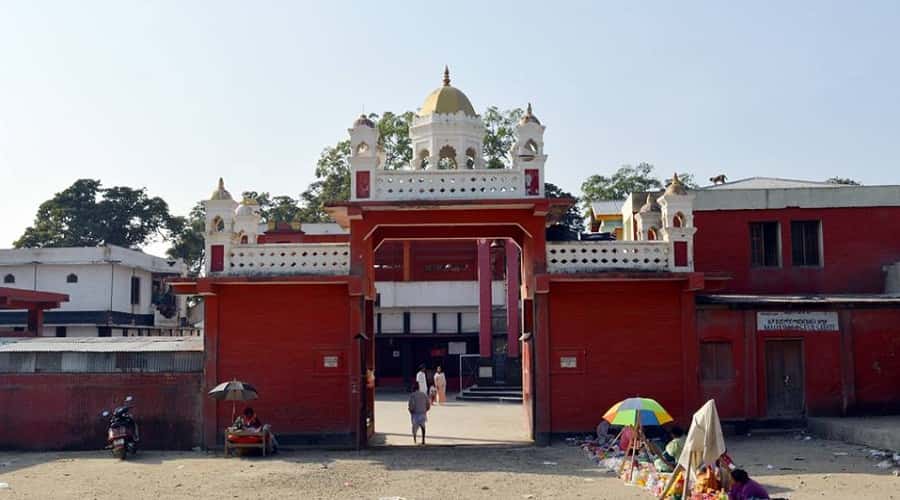
This temple, an abode of Lord Hanuman, dates back to 1725AD. The temple was built during that time by Maharaja Garib Niwaj. The temple is situated in the Imphal city of Manipur and by the Imphal River. Also, a dense forest cover besets the temple. This temple is an emblem of the Ramanadi Hindu cult that became popular once upon a time in Manipur.
Ugratara Temple, Assam
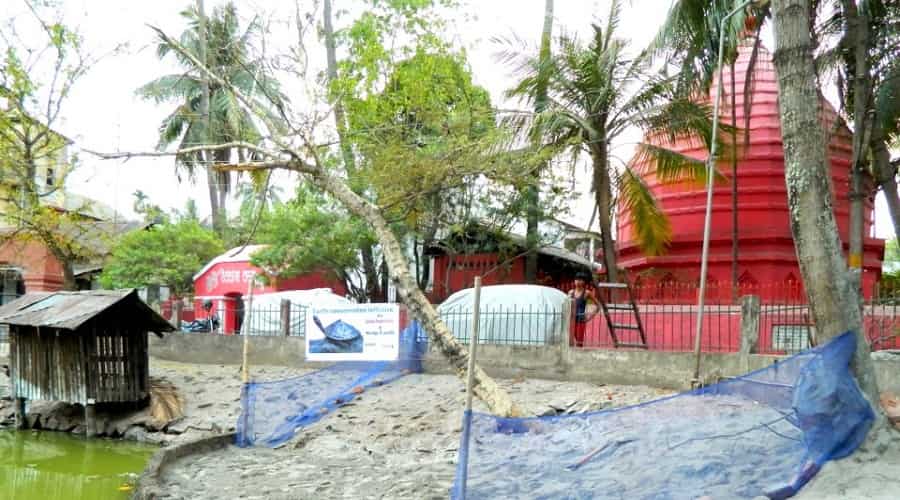
This is another important Shaktipeeth dedicated to the Goddess Ugratara, a manifestation of Goddess Durga. The temple came into being in the year 1725AD. Unlike other temples this temple is devoid of any idol of the deity. Instead it has a sunken water-filled pit that symbolizes the divine presence of the goddess within the temple.
Dimapur Kalibari, Nagaland
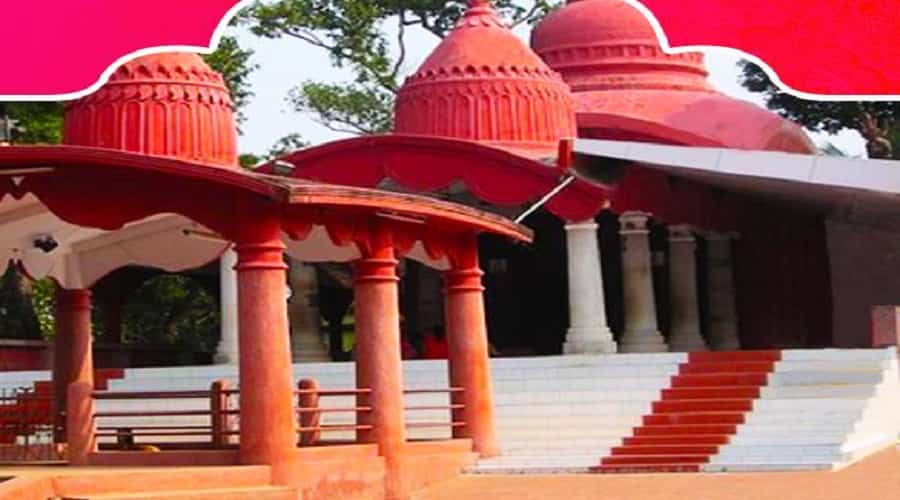
The Dimapur Kalibari is an abode of goddess Kali and falls within Nagaland’s Dimapur city. Around the year 1956 this temple came into being.
Om Temple, Aizawl
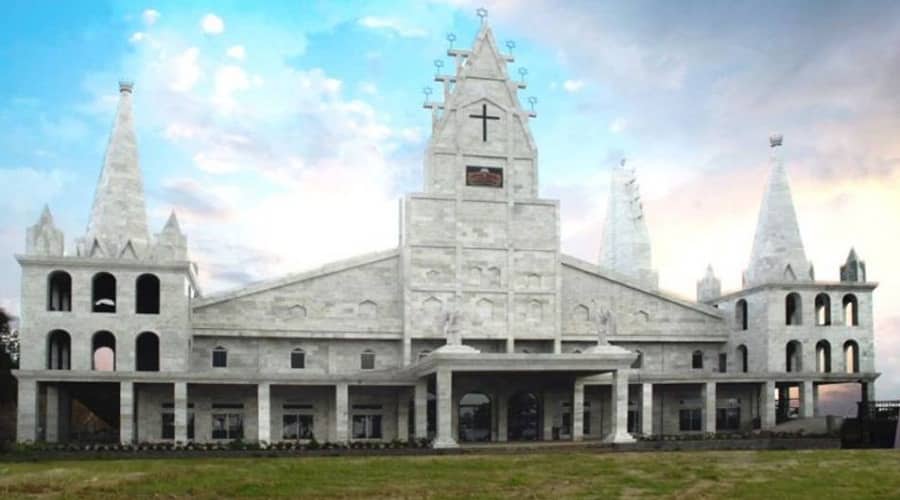
This unique temple of Mizoram belongs to lord Shiva and has a unique OM Shape in terms of its architecture. The temple graces the Aizawl city of Manipur.
Aswaklanta Temple, Assam
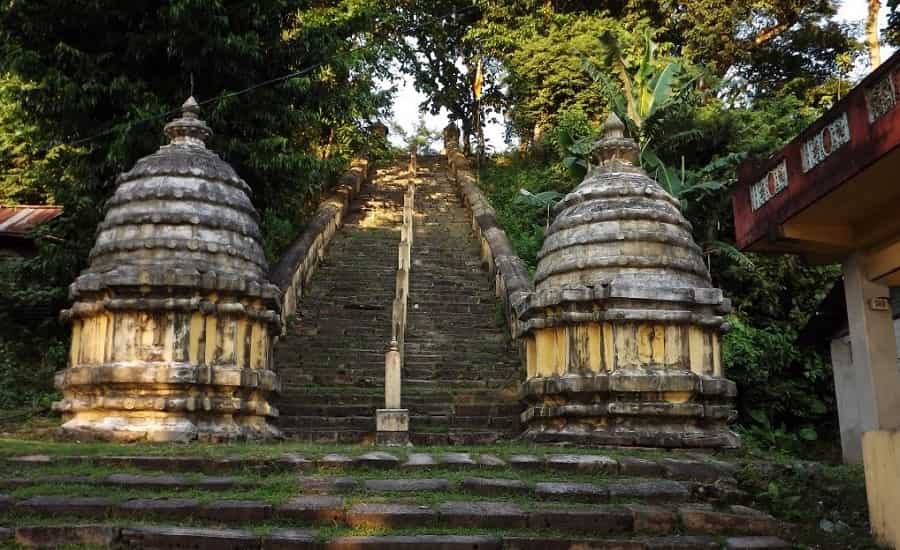
Situated on the Northern bank of the mighty river Brahmaputra close to Guwahati, Aswaklanta temple is a prominent Hindu pilgrimage in the state of Assam. It was built by the Ahom King Shiva Singha in the year 1720 and finds its mention in the ancient Hindu religious scriptures. It is believed that Arjuna, the 3rd Pandava had watered his horse at the site where this temple is located today while he was traveling through the country for performing Ashvamedha Yagna. It is considered as one of the holiest places, which is frequented by devotees from all over the state throughout the year.
Shiva Dol, Assam
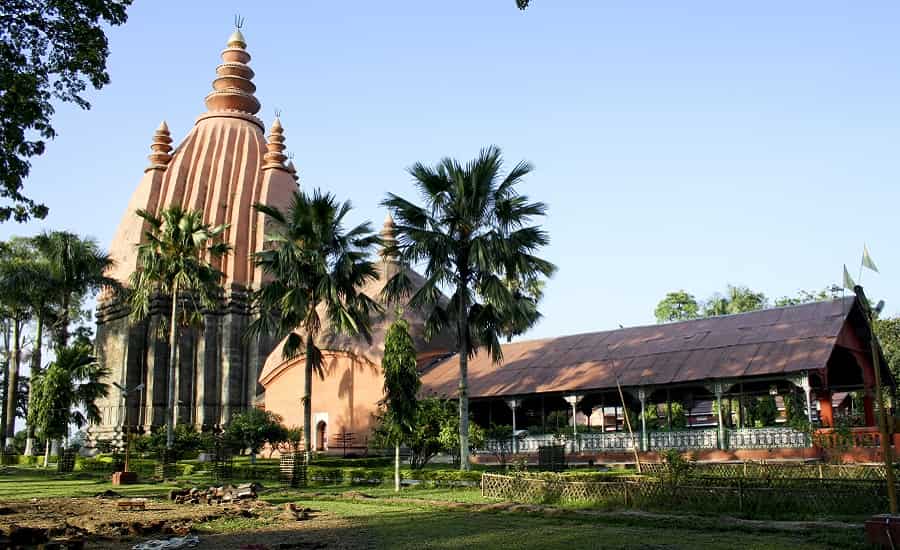
A famous Hindu pilgrimage of North-East India is the Shiva Dol, which is located in Sivasagar, a town in the state of Assam. It stands on the bank of Borpukhuri tank and is about 300 years old. It was built by Queen Ambika, the wife of Ahom ruler Sargadeu Siva Singha in the year 1734. It is not merely a religious place for the Hindus but offers a glimpse of the Ahom architecture. Standing amid the beautiful landscape, it is 180 feet tall and 195 feet in diameter with golden dome at its top. The temple is dedicated to Lord Shiva and attracts a horde of devotees from all over the state.
Hajo Temples
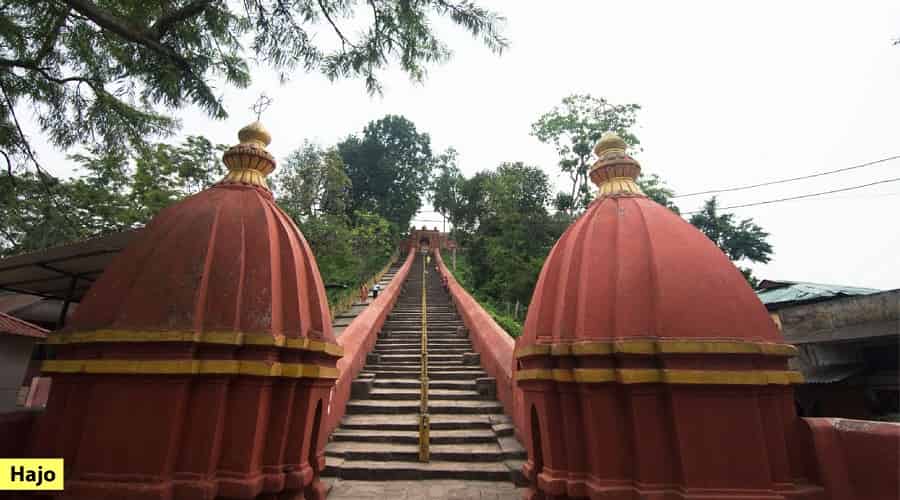
Think of religious harmony and you think of Hajo. A short distance away from Guwahati, Hajo is an important religious destination for Hindus, Buddhists and Muslims alike. Located on the famous Manikuta Hill is the Hayagriva Madhava Temple, dedicated to the Hayagriva avatar taken by Lord Vishnu. This avatar shows Vishnu as the body of a human with the head of a horse. According to Buddhist scholars, this temple also contains one of the relics of Lord Buddha. This is the spot where Gautama Buddha attained Nirvana, as per the legends. Hence this place is witness to both Hindus and Buddhists praying here.
Along with the Hayagriva Madhava Temple is the temple of Madan Kamdev. Dating back to the 10th-12th century A D this temple is very similar in design to the temples at Khajuraho, which are also devoted to Kamdev.
The Powa Mecca at Garurachal Hill is said to have been built over a foundation that contains one gram of soil from Mecca. Inscriptions have revealed that the soil was brought from Mecca by Pir Giasuddin Auliya, the pioneer of Islam in this area. Built by Sujauddin Mohammed Shah in 1657 A D, the mosque also holds the tomb of the Pir. The place is considered as a very important shrine by the Muslim community of Assam.
Vishnu Tirtha Asvakranta
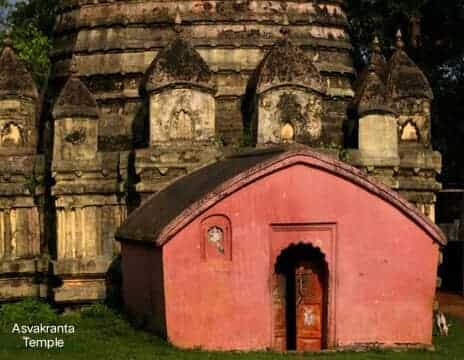
The sight of Vishnu Tirtha Asvakranta is considered to be one of the greatest Vishnu Shrine in the world. The location of this temple gives a magnificent view, as it is located on the banks of River Brahmaputra. This shrine also has the footprints of God Vishnu that draws lots of crowds throughout the year.

